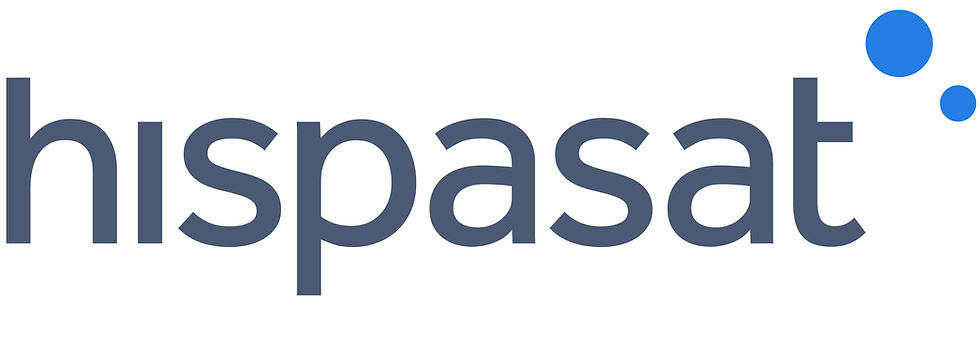NASA/ESA Hubble Space Telescope celebrates 30 years of science discoveries
- Satellite Evolution

- Apr 22, 2020
- 4 min read

On Friday 24 April 2020, the NASA/ESA Hubble Space Telescope celebrates 30 years of science discoveries that have revolutionised nearly all areas of current astronomical research, from planetary science to cosmology, and its countless pictures that are unmistakably out of this world.
Activities planned
- Hubble 30th Anniversary press release to be published on Friday 24 April at 13:00 CEST with a new breathtaking image from the Hubble Space telescope.
- Join us for a live streamed conversation with Hubble experts from around the world to mark the anniversary of the iconic observatory. Guests will reflect on Hubble’s impact on their professional careers, the development of astronomy as a discipline, and the public perception of our Universe. The conversations will take place according to following schedule on ESA Web TV on Friday 24 April:
16:30 CEST - Italian 17:15 CEST - French 18:00 CEST - German 18:45 CEST - Spanish 19:30 CEST - English
- Wish Hubble a Happy Birthday! On April 10th, an announcement was published inviting followers to wish Hubble a Happy 30th birthday by creating a birthday cake, with whatever they have available in the house and to share their cake with images and videos using #Hubble30BDayCake and #Hubble30 on Twitter and Instagram.
- Let’s say thank you to Hubble — Call for Artistic Creations: an announcement with the press release for a call for artistic creations from those aged 3 to 30 from ESA Member States that celebrate and thank Hubble. Artistic work of all kinds - including drawings, paintings, photography, sculptures, and graphic designs - will be welcomed. Inspiration for submissions can include Hubble's 30th birthday, the spacecraft, Hubble's scientific achievements and imagery, or the conception of an anniversary image of their own. Submissions will be made online and a selection of art pieces will be used for dedicated albums on Facebook and Flickr, and future outreach initiatives (including a Hubblecast). We also invite those submitting artwork to share their pieces on social media using #Hubble30Art and #Hubble30.
- Facebook watch party of special anniversary videos on Friday at 15:00-16:30 CEST on https://www.facebook.com/hubbleESA/
ESA/NASA collaboration
Expanding the frontiers of the visible Universe, the Hubble Space Telescope looks deep into space with cameras that can see across the entire optical spectrum from infrared to ultraviolet.
The Hubble Space Telescope (HST) is a 2.4 m-diameter space telescope optimised to observe from the ultraviolet to the infrared, collaborated between ESA and NASA. Launched in 1990 and designed for refurbishment by astronauts, Hubble is one of the greatest scientific projects. Opening our eyes to the wonders of our ‘planetary’ backyard and beyond, it has revolutionised modern astronomy by being an efficient tool for making new discoveries and changing the way research is done.
ESA has been a partner with NASA on the Hubble Mission since its very beginning in 1975. ESA has, among other things, provided the Faint Object Camera (one of the mission’s instruments), the first two sets of solar wings that powered the spacecraft, and a team of space scientists and engineers at the Space Telescope Science Institute (STScI), the Science Operation Centre for Hubble in Baltimore, USA.Europe's contribution to HST entitles European astronomers to 15% of the telescope's observing time, but in June 2012 European scientists were awarded a record 26.5% of observing time. The European science archive for the Hubble Space Telescope is located at ESA’s European Space Astronomy Centre (ESAC) in Villanueva de la Cañada near Madrid, Spain. Until June 2012 it was hosted by the Space Telescope European Coordinating Facility (ST-ECF), located at the headquarters of the European Southern Observatory near Munich, Germany.
James Webb Space Telescope
Successor to the Hubble Space Telescope, the James Webb Space Telescope (JWST) will help us to find out more about the origins of the Universe by observing infrared light from the youngest galaxies and possibly the first stars. It will show us in detail how stars and planetary systems form and will also allow us to study planets both in our Solar System and those orbiting around other stars.
The James Webb Space Telescope (JWST) is designed to expand the scientific success of Hubble. Being a 'cool' telescope, JWST is designed to operate at very low temperatures (around -230° C). This will give us an unprecedented view of the Universe at near and mid-infrared wavelengths and will allow scientists to study a wide variety of celestial objects, ranging from planets in the Solar System to nearby stars, from neighbouring galaxies out to the farthest reaches of the very distant Universe. JWST is required to operate for a minimum of five years, planned for ten.
JWST is very big: its primary mirror has an area seven times larger than that of Hubble, which will make it much more sensitive. JWST will combine superb image quality, a large field of view, and a low level of background light with a highly stable environment. All of these characteristics set JWST apart from other existing or planned observatories and will open a new field of scientific discovery.
The James Webb Space Telescope is an international project led by NASA with its partners, ESA and the Canadian Space Agency. As part of its contribution to the project, ESA provides the NIRSpec instrument, the Optical Bench Assembly of the MIRI instrument, the Ariane 5 launcher, and staff to support mission operations at the Space Telescope Science Institute (STScI) in Baltimore, USA.



Comments